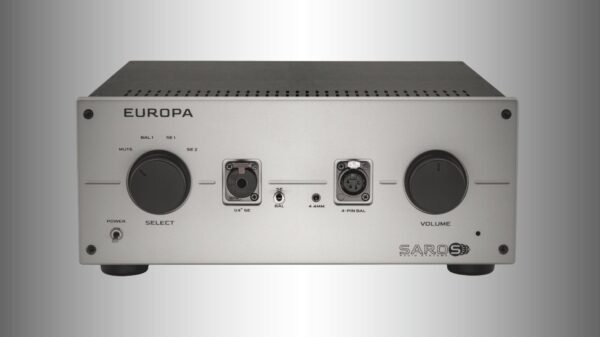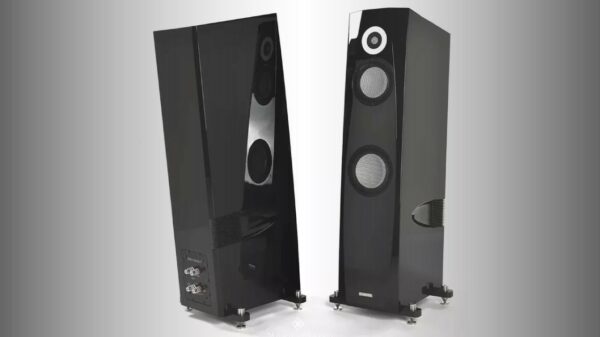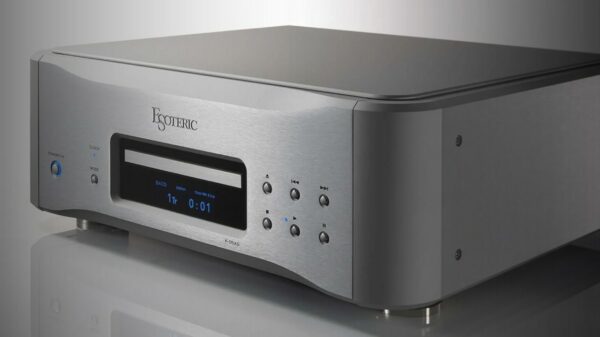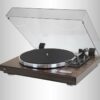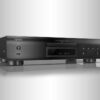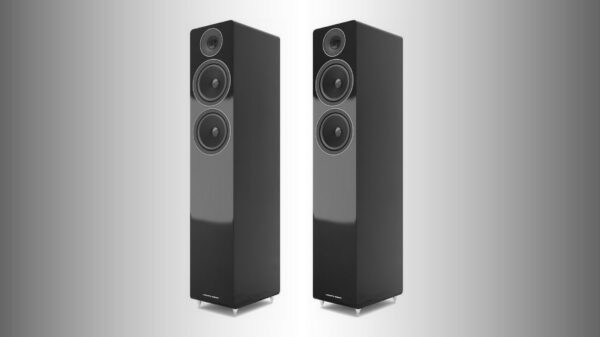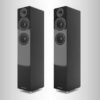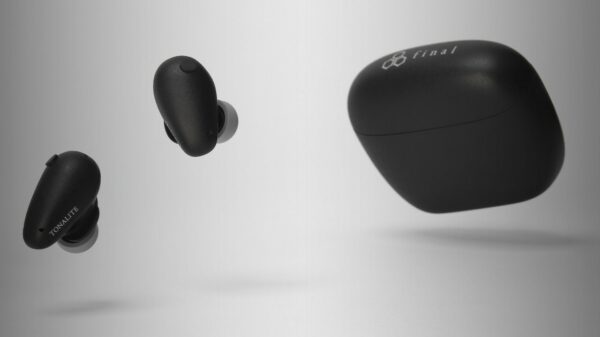Topping has built its new flagship DAC, the D900, around proprietary discrete 1-bit conversion technology instead of the standard chips that power most DACs in this price range. Topping calls this topology Precision Stream Reconstruction Matrix (PSRM).
Topping D900: all aluminum

Let’s start with the Topping D900’s appearance. The D900’s chassis consists of three-millimeter-thick aluminum panels with an eight-millimeter-thick front panel. Cooling fins run along both sides, though the PSRM architecture apparently generates less heat than conventional chip-based designs. With dimensions of 330 x 57 x 210 millimeters (W x H x D), it follows the standard dimensions of hi-fi components. The feet are said to effectively absorb vibrations.

The included remote control appears surprisingly high-quality. It’s made entirely of aluminum, milled from a single block, instead of plastic with a metallic finish. It’s a small detail that indicates Topping apparently intends to compete with established high-end manufacturers, not just the Chi-Fi brands.
Topping D900: Precision Stream Reconstruction Matrix (PSRM)

According to its designers, the D900 operates fundamentally differently from other DACs. Unlike conventional DAC chips that process multiple bits simultaneously (think ESS Sabre or AKM chips with their delta-sigma architecture), a 1-bit DAC operates with single bit values that switch at extremely high speeds. This approach shares DNA with the 1-bit structure of DSD, but applies it to all incoming digital audio, whether PCM or DSD. Topping developed its own algorithms and circuit implementation instead of adopting existing technology from chip manufacturers like ESS, AKM, or Burr-Brown.
PSRM also differs from R2R ladder-to-DA converters. While R2R designs use networks of precision resistors to convert digital values directly to voltages, PSRM relies on time-domain density modulation. And unlike FPGA-based designs from Chord Electronics or dCS, which run custom code on programmable chips, Topping’s PSRM uses discrete logic components operating at nanosecond speeds, according to Topping’s website.
Topping D900: eight inputs, two outputs

On the rear, the D900 offers a total of eight digital inputs, namely 1 x USB B, 1 x USB C, 2 x optical S/PDIF, 1 x coaxial S/PDIF, 1 x AES/EBU (XLR) and finally 1 x HDMI, the latter of which is capable of processing I2S signals in LVDS format.
The USB and I2S inputs handle the full package, i.e., PCM up to 32-bit/768 kHz and native DSD512. The S/PDIF and AES/EBU connections achieve up to 24-bit/192 kHz PCM and DSD64 in a DoP wrapper.

On the output side, Topping has fitted two pairs of balanced XLR connectors with Neutrik connectors. One pair provides a fixed line-level signal for connection to an integrated amplifier or preamplifier. The second pair runs through the D900’s volume control for direct connection to power amplifiers or active speakers. RCA outputs are not present. There simply doesn’t seem to be room for them on the back, but a set of adapter plugs could offer a solution for those wanting to make a RCA connection to an amplifier.
There’s also Bluetooth 5.1 connectivity with support for LDAC, aptX Adaptive, aptX HD, and the standard aptX, AAC, and SBC codecs.
Topping D900: jitter pushed down

Jitter refers to timing errors in a digital signal that can cause audible distortion. Topping suppresses jitter using a CPLD (Complex Programmable Logic Device) for clock optimization. According to Topping, CPLDs offer more predictable timing than FPGA chips thanks to their internal architecture, making them particularly suitable for time-critical digital audio applications.
The current-to-voltage conversion stage, required to convert the DAC output into usable line-level signals, uses what Topping describes as integrated low-distortion operational amplifiers combined with discrete components. This I/V stage was specifically designed to complement the PSRM architecture.
Topping D900: not just a volume knob

The volume control deserves special mention, as this is where the D900 distinguishes itself from DACs that simply attenuate their output voltage digitally or route the signal through a passive potentiometer. Topping has implemented a robust discrete analog preamplifier stage in the D900 with a relay-switched volume control featuring 18 relays (nine per channel) for 0.5 dB adjustment steps.
The preamplifier functions as an active gain stage with its own power supply control, maintaining a consistent output impedance regardless of the volume setting. Users connecting directly to power amplifiers or active speakers gain the impedance matching and control capabilities of a dedicated preamplifier without the need for an additional preamplifier and cables. Note that the D900 does not have analog inputs, so connecting an analog source will require another preamplifier.

Topping D900: color display and operation
A 2-inch color display dominates the right side of the front panel and runs Topping’s Aurora UI with nine selectable color schemes. Users can configure the display to show the incoming sample rate and bit depth, or to display a real-time frequency spectrum analyzer or VU meters. Touch-sensitive buttons flank a programmable rotary knob that defaults to volume control but can be assigned to other functions.
Topping D900: Distortion and noise reduced to inaudible levels
Topping claims the D900’s total harmonic distortion is -140 dB, with an S/N ratio of 131 dB. A value of 131 dB significantly exceeds the theoretical maximum of 16-bit CD audio. Such figures are no longer particularly unusual, however.
Topping D900: Ten bands for sonic design
The D900 features a 10-band parametric EQ, adjustable for frequency center, Q (bandwidth), and gain. Using the free Topping Tune software for Windows and macOS, users can create and save multiple EQ profiles to the DAC’s internal memory. Once uploaded, the profiles can be selected from the control panel without needing a computer.
The Topping D900 has a suggested retail price of just under $1,800.














